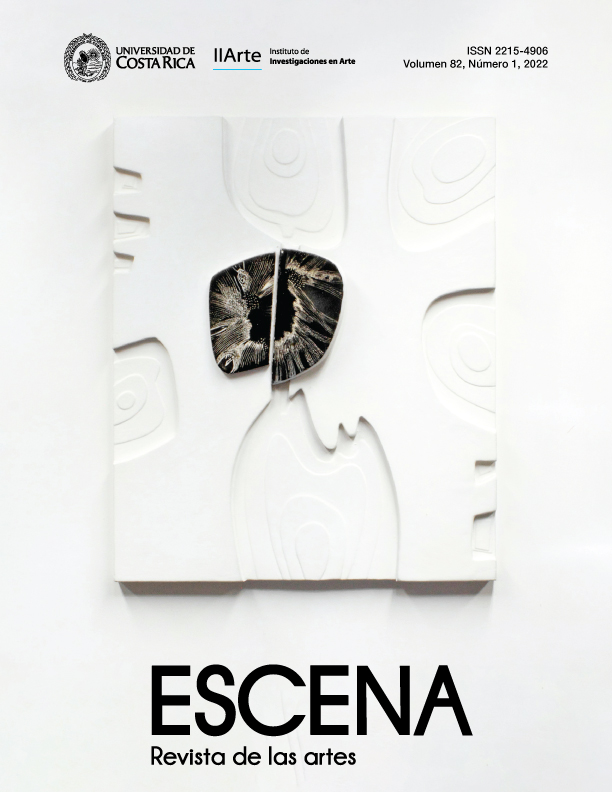Abstract
The Olmecs were a pristine culture that grew in Southern Mexico starting nearby 1600 B.C. The unmistakable style of their creations, that have been found in many territories of Mesoamerica, identify them. In this article, we study materials, especially stone, used by the Olmecs to sculpt their artistic works. This study starts with the type of rocks, which the Olmec used to sculpt artistic works, where we see the evolution of a unique aesthetic style that started with a strategic selection of rocks. The data and hypotheses of specialists complement the studies provided here to specify the natural resources, the effort to obtain them and the routes and techniques for transporting raw materials and finished products. With our paper, we seek to reinforce and revitalize the hypothesis that the Olmecs, along with the search for beauty, had a clear interest in spreading an ideological discourse.
References
Beverido, F. (1996). Estética olmeca. Veracruz, México: Universidad Veracruzana.
Coe, M., & Diehl, R. (1980). In the Land of the Olmec. Austin, United States: University of Texas Press.
Covarrubias, M. (1957). Indian Art of Mexico and Central America. New York, United States: Alfred A. Knopf.
Cyphers, A. (2004). Escultura olmeca de San Lorenzo Tenochtitlán. Ciudad de México, México: Instituto de Investigaciones Antropológicas, Universidad Nacional Autónoma de México.
De la Fuente, B. (1995). El arte olmeca. Arqueología Mexicana, 2(12), 18-37.
De la Fuente, B. (2003). Obras Tomo I: El arte, la historia y el hombre. Ciudad de México, México: El Colegio Nacional.
Esparza, J.R. (1999). Aplicación de las técnicas nucleares PIXE y NAA para el estudio de las redes de comercio de obsidiana en tierra caliente, Michoacán (Tesis de licenciatura). Escuela Nacional de Antropología e Historia, Ciudad de México, México.
Facultad de Física de la Universidad Nacional Autónoma de México. (s.f.). Fundamentos de la técnica PIXE. Recuperado de https://www.fisica.unam.mx/peletron/INVESTIGACION/tecnica_PIXE.html
Jiménez, W. (1942). El enigma de los olmecas. Cuadernos Americanos, 5(5), 113-146.
Kirchhoff, P. (2000). Mesoamérica. Dimensión Antropológica, 19(7), 15-32.
Lombardo, S. (1996). El estilo teotihuacano en la pintura mural. En B. de la Fuente (Ed.), La Pintura Mural Prehispánica en México, I Teotihuacán, T. II estudios (pp. 3-64). Ciudad de México, México: Instituto de Investigaciones Estéticas, Universidad Nacional Autónoma de México.
Lowe, G.W. (1998a). Los olmecas de San Isidro en Malpaso, Chiapas. Ciudad de México, México: Instituto Nacional de Antropología e Historia, Colección Científica.
Lowe, G.W. (1998b). Mesoamérica olmeca: diez preguntas. Ciudad de México, México: Instituto Nacional de Antropología e Historia, Colección Científica.
Morante, R. (2006). Mitos e historias del Señor de las Limas. Quaderni di Thule. Revista italiana di studi americanistici, 29, 589-595.
Navarrete, C. (1982). Acotación bibliográfica sobre dos notas olmecas. Revista Mexicana de Estudios Antropológicos, 28, 159-174.
Ortiz, P., Rodríguez, M., & Delgado, A. (1997). Las investigaciones arqueológicas en el cerro sagrado Manatí. Veracruz, México: Universidad Veracruzana.
Sahagún, B. (1946) Historia General de las cosas de la Nueva España. Ciudad de México, México: Editorial Nueva España, S.A.
Soustelle, J. (2000). Los Olmecas. Ciudad de México, México: Fondo de Cultura Económica.
Tate, C.E. (1996). The Olmec World: Ritual and Rulership. New Jersey, United States: The Art Museum-Priceton University.
Taube, K. (2015). Los significados del jade. Arqueología Mexicana, 23(133), 48-55.
Worringer, W. (1983). Abstracción y naturaleza. Ciudad de México, México: Breviarios, Fondo de Cultura Económica.

This work is licensed under a Creative Commons Attribution-NonCommercial-NoDerivatives 4.0 International License.
Copyright (c) 2022 Rubén Bernardo Morante López


